Julian Gustave Symons was a British crime writer and poet. He also wrote social and military history, biography and studies of literature. He was born in Clapham, London, and died in Walmer, Kent.
The Golden Age of Detective Fiction was an era of classic murder mystery novels of similar patterns and styles, predominantly in the 1920s and 1930s.
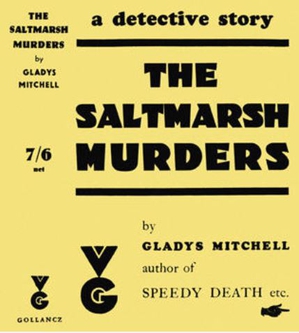
The Saltmarsh Murders is a 1932 mystery detective novel by the British writer Gladys Mitchell. It is the fourth in her long-running series featuring the psychoanalyst and amateur detective Mrs Bradley. It has been highly acclaimed as a part of the Golden Age of Detective Fiction.
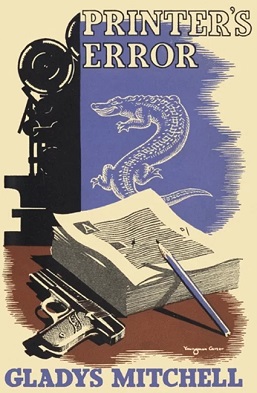
Printer's Error is a 1939 mystery detective novel by the British writer Gladys Mitchell. It is the tenth in her long-running series featuring the psychoanalyst and amateur detective Mrs Bradley.

The Mystery of a Butcher's Shop is a 1929 mystery detective novel by the British writer Gladys Mitchell. It is the second in her long-running series featuring the psychoanalyst and amateur detective Mrs Bradley. It further established the reputation of the quick-witted Bradley who is some way ahead of the investigating police officers. Mitchell also employed a number of original touches that would continue during the series.

Laurels are Poison is a 1942 mystery detective novel by the British writer Gladys Mitchell. It is the fourteenth in her long-running series featuring the psychoanalyst and amateur detective Mrs Bradley. It was Mitchell's own favourite among her novels and has been considered her best by other critics. It introduced the character of Laura Menzies who became recurring assistant of Mrs Bradley in subsequent novels.

The Narrowing Circle is a 1954 mystery crime novel by the British writer Julian Symons. The title refers to the "narrowing circle" the investigating policemen throw around the most likely suspect.

The Man Who Killed Himself is a 1967 comedy crime novel by the British writer Julian Symons.
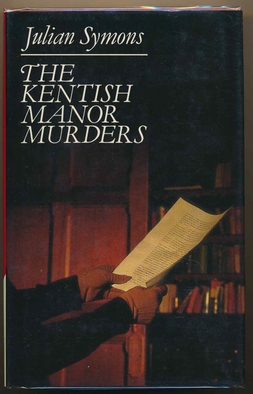
The Kentish Manor Murders is a 1988 mystery detective novel by the British writer Julian Symons. A pastiche of the traditional Sherlock Holmes stories by Arthur Conan Doyle, it is a sequel to the 1975 novel A Three-Pipe Problem.

The Progress of a Crime is a 1960 mystery crime novel by the British writer Julian Symons. It was awarded the 1961 Edgar Award.
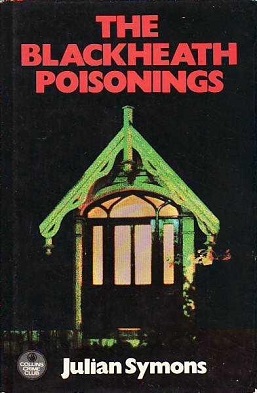
The Blackheath Poisonings is a 1978 historical mystery novel by the British writer Julian Symons. It is a murder mystery set in the late Victorian era.

The Colour of Murder is a 1957 crime novel by the British writer Julian Symons. It was awarded the Gold Dagger of the Crime Writers' Association for that year. It was republished by British Library Publishing in 2018 along with another Symons novel The Belting Inheritance.

The End of Solomon Grundy is a 1964 crime novel by the British writer Julian Symons. The title refers to a line in the nursery rhyme Solomon Grundy.
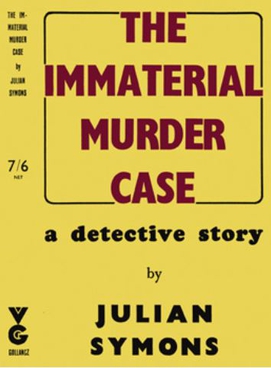
The Immaterial Murder Case is a 1945 mystery detective novel by British writer Julian Symons. His debut novel, it was the first in a trilogy featuring the Scotland Yard detective Chief Inspector Bland. The story gently makes fun of the "Great Detective" archetype popular during the Golden Age of Detective Fiction Symons wrote the book in 1939 but didn't submit it for publication for several years during the Second World War.

The Paper Chase is a 1956 mystery crime novel by the British writer Julian Symons. It was published in America the following year by Harper & Brothers under the alternative title of Bogue's Fortune. It was reviewed by fellow writers Milward Kennedy in The Guardian and Philip John Stead in the Times Literary Supplement.

The Plot Against Roger Rider is a 1973 mystery thriller novel by the British writer Julian Symons. The novel takes place both in England and Francoist Spain. It was published in the United States by Harper.

Mysterious Mr. Sabin is a 1898 spy thriller novel by the British writer E. Phillips Oppenheim. It was the first spy novel by Oppenheim, a genre which he came to dominate during the First World War and interwar era. Revolving around a plot of a Frenchman selling British military secrets it became a bestseller, establishing him as a popular writer. It has been described as the novel "that launched Oppenheim's career of xenophobic espionage fantasy". It contains elements of invasion fiction, a common genre theme at the time.
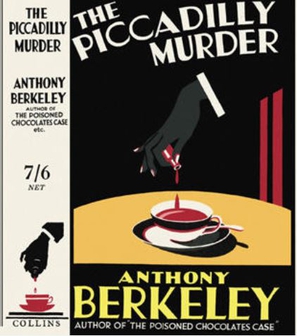
The Piccadilly Murder is a 1929 mystery detective novel by the British writer Anthony Berkeley. Berkley was a prominent writer during the Golden Age of Detective Fiction, known for his private detective Roger Sheringham series and his development of the inverted detective story. Although not part of the Sheringham series it featured the character of Chief Inspector Moresby of Scotland Yard who also appeared several times with Sheringham. Moresby reappeared with the chief protagonist Chitterwick in a sequel Trial and Error in 1937.

Trial and Error is a 1937 mystery detective novel by the British writer Anthony Berkeley. It was a loose sequel to the 1929 novel The Piccadilly Murder, featuring two of the characters from the earlier work the unprepossessing but shrewd Ambrose Chitterwick and Chief Inspector Moresby of Scotland Yard. Berkeley was a prominent author of the Golden Age of Detective Fiction, known for his inverted detective stories.
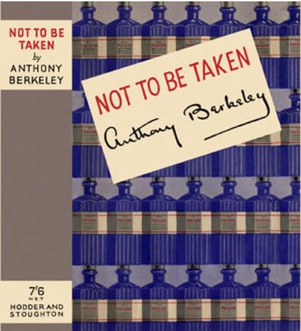
Not to Be Taken is a 1938 mystery detective novel by the British writer Anthony Berkeley. It was one of several stand-alone novels he wrote alongside his series featuring the private detective Roger Sheringham. It was written when the Golden Age of Detective Fiction was at its height. It was published in the United States with the alternative title A Puzzle in Poison.


















